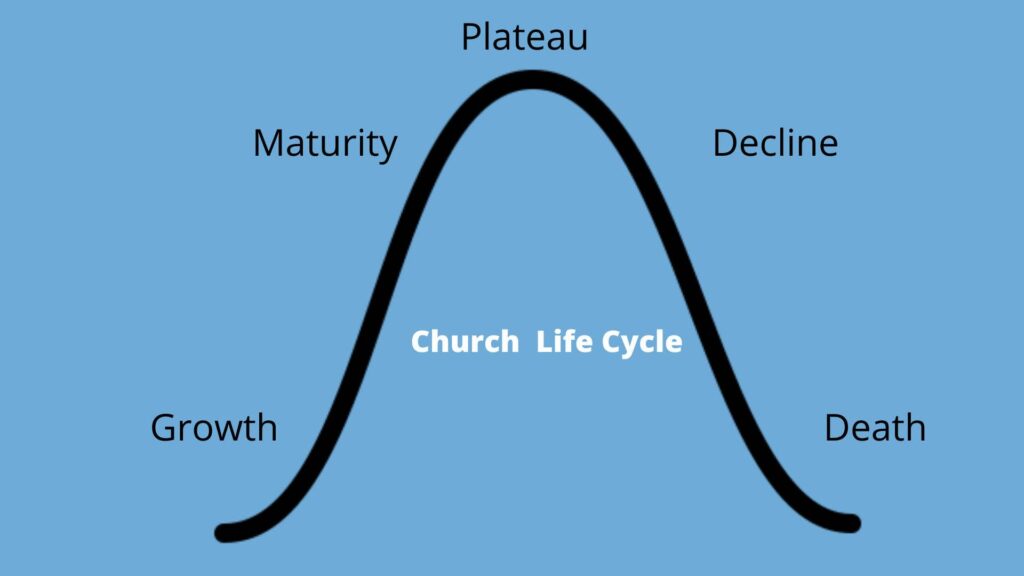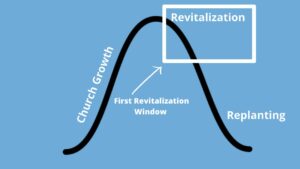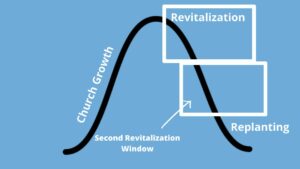The following article is from The Resound Network, a ministry of the Missouri Baptist Convention. It provides some important information on revitalization and replanting. To print a PDF of this article, click here.
Seasons of growth, plateau and decline are present in almost every church at some point in its history. For some churches a season of decline could lead to its eventual demise. The task of every church is to be keenly aware of where it is presently and what steps toward its future it must take.


The question a growing church asks: What must we do?
A growing church is a blessing and, if you ask some pastors, that growth can be a challenge. Handling ever larger crowds, demands for finding, caring for and equipping children’s ministry workers, assimilating guests-these are all good things, even if challenging. A growing church often focuses on answering the “what” questions on a regular basis.
What can we do?
- What can we do about parking?
- What should we do about membership?
- What would improve our discipleship and assimilation strategies?
The question a plateaued church asks: How are we doing?
The majority of churches in N. America find themselves in state of plateau, experts indicate up to 80% would qualify for that category. A church in this condition may not feel a sense of urgency nor celebration. Often, churches in this stage ask the “how are we doing?” question as a sort of status check. When the answer comes back that we’re neither growing or declining it can lead to a sense of “okayness” which rarely sets off alarms. The church continues perhaps stumbling into continued growth or slipping into decline.
The question a declining church must ask: Why are we not growing?
You’ll rarely meet a declining church who isn’t aware that it is in decline. Yet, this church may not have a clear picture of just how steep the decline may be, nor how long it has been occurring, and they may not have a clear idea of when the downward trends actually began. After a while this church may ask the “why” question and the answers often fall along these common replies.
Why are we not growing?
- The community has changed.
- We’ve had a few Pastors that didn’t work out.
- People are not interested in church much these days.
Frequently the answers given are external of the body or assigned to a circumstance or someone or something beyond the declining church’s control. Yet, in reality, the reasons for church decline are often attributable to the church and the actions of its leaders, and the attitudes and spiritual condition present in the congregation. Add in historical conflict, hidden sin and divisions and it’s easy to begin piecing together why the church is where it is in terms of health and vitality.
Why are we not growing? (Answers which are true but you probably won’t hear)
- We run off pastors when they challenge us to mature in Christ or let go of our preferences.
- We moved out of the community and don’t really want to reach the people who replaced us and now live by our church.
- We’ve tolerated sinful behavior, we haven’t addressed divisions and conflict and good people left
our church.
Whenever a church is in decline, it is first and foremost a spiritual issue.
A declining church often asks the wrong question. It asks “what can we do?” rather than “why are we dying?”

The Revitalization Window
There is a time period in the life of a church, when it has the opportunity to ask the right questions, discern the answers and then chart a course in a new direction. This is a “revitalization window.” There are perhaps one to three Revitalization windows in the life of a church.
- Revitalization Window 1 – Plateau Stage or onset decline
- Revitalization Window 2 – Persistent/continued decline
- Replant Window – Late/critical/significant decline, inability to revitalize

The First Revitalization Window
The decline is in its early stages, budget and attendance are waning but there are a good number of folks still active in serving, mission and leading. If the church asks the right questions, focuses on finding the right answers and then responds and plans accordingly, with God’s help the church can be revitalized.

The Second Revitalization Window
At some point if decline persists and the underlying causes are unaddressed a church will enter into its second “revitalization window.” This window is characterized by further attendance decline, decreased giving, fewer lay and paid leaders who lead and do ministry. Full time staff may be reduced and a bi-vocational pastor may be required. Mortgage payments may go to “interest only” and ministry and missions budgets are cut to survive.
Another way to communicate this is to visual an airplane in a steep dive. The longer
the dive, the sharper the decrease in altitude, the more accelerated the descent the
quicker the aircraft will arrive at a clear point of “no return” after which no matter how skilled
or determined the pilot may be, the forces of decline cannot be overcome and
the aircraft saved.
We often say it this way; “Church revitalization is possible but in some cases it is just not probable.”
The longer the decline and the further down the life cycle a church goes the more radical changes are required to arrest and reverse the churches trajectory.
Let’s return to our window guide
Revitalization Window 1 – Plateau Stage or onset decline (Change required)
Revitalization Window 2 – Persistent/continued decline (Significant change required)
Replant Window – Late/critical/significant decline. (Radical change required)
Here is a case study from an actual consultation.

When revitalization is beyond probable a church must be Replanted. Generally speaking , replanting is an intentional reset, much like the reboot of a computer but with a new operating system. The old goes away and the new works within the framework of the facility and history of the original congregation but with new leaders, new decision making structures and a qualified and called Replanter.

Options and the Church Life Cycle
What options should a church consider as it faces decline? Which ones are best for it as it faces an uncertain future and a continued downward trend? The following are offered as representative suggestions for a church that finds itself in steep or prolonged decline.
Revitalization: a deliberate, dedicated and protracted effort to reverse the decline or death of an existing church.
Assisted Revitalization: a deliberate, dedicated and protracted effort to reverse the decline or death of an existing church with outside help and oversight from a partnering denomination, association or consulting agency.
Replant from Within: the intentional and official decision of a church to discontinue its previous way of ministry and call a qualified and assessed Replanter and to relaunch as a new church with existing people on the foundation and legacy of the historic church. Often occurs with minimal or no outside partners or resources.
Covenant Revitalization: A mutually agreed upon process involving a pastor, church in need of revitalization, and at least one outside relationship for mutual accountability for the accomplishing stated benchmarks indicative of a vital gospel proclaiming , disciple making congregation.
Partnership Replant: the intentional and official decision of a church to surrender it ’s assets and facilities and accept leadership of a healthy partnering congregation for the purpose of relaunching a vital gospel proclaiming , disciple making church in its location.
- Adoption
- Marriage Merger
- Family Network
Closure and Donation of Property: the intentional and official decision of a church to cease operating and donate its property and assets for kingdom purposes through church planting and replanting.
If you have any questions on revitalization or replanting, please contact Darren Hales, MTSBC Church Strengthening Leader, at [email protected] or 406-461-9120.

